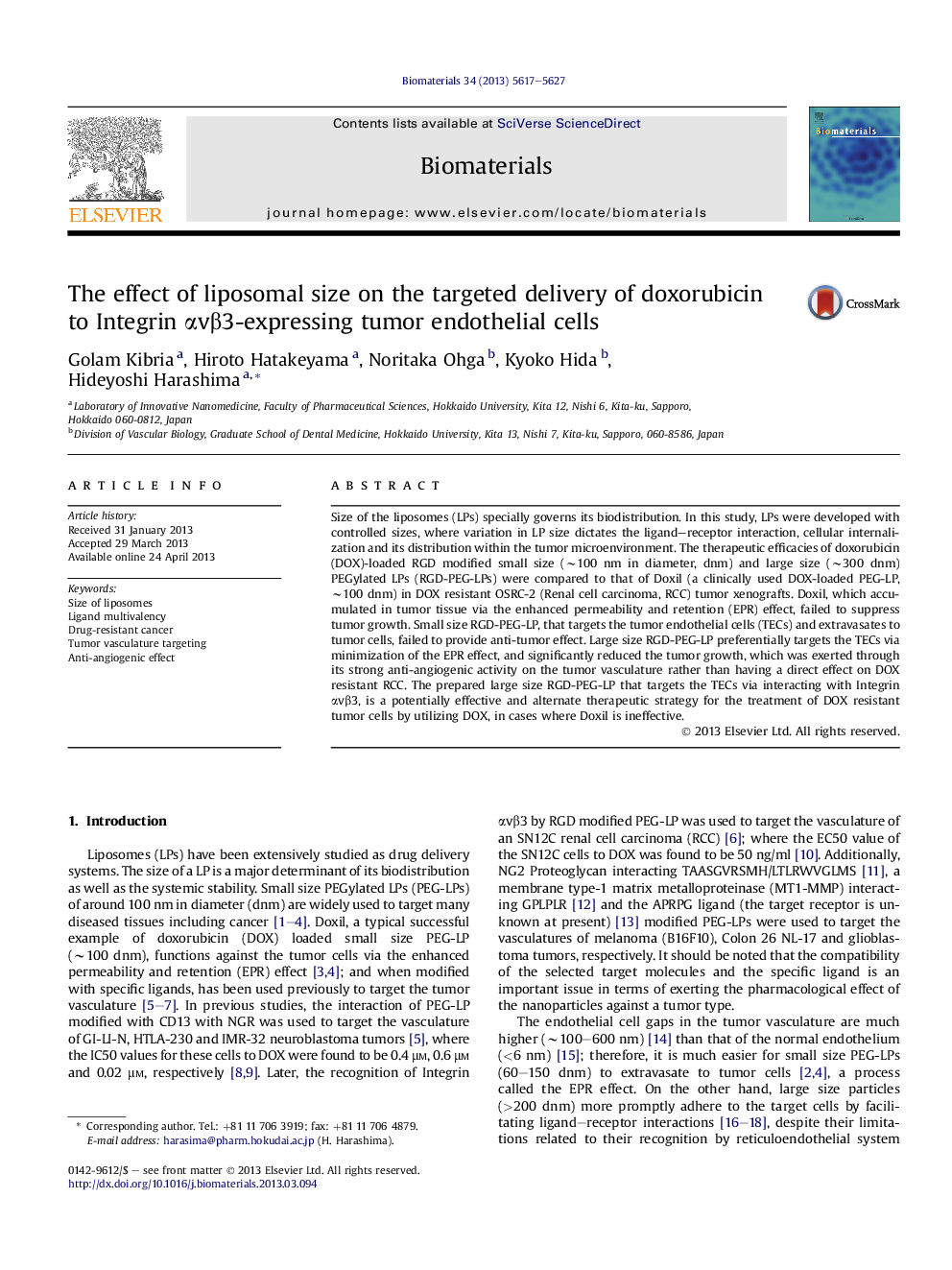| Article ID | Journal | Published Year | Pages | File Type |
|---|---|---|---|---|
| 6361 | Biomaterials | 2013 | 11 Pages |
Size of the liposomes (LPs) specially governs its biodistribution. In this study, LPs were developed with controlled sizes, where variation in LP size dictates the ligand–receptor interaction, cellular internalization and its distribution within the tumor microenvironment. The therapeutic efficacies of doxorubicin (DOX)-loaded RGD modified small size (∼100 nm in diameter, dnm) and large size (∼300 dnm) PEGylated LPs (RGD-PEG-LPs) were compared to that of Doxil (a clinically used DOX-loaded PEG-LP, ∼100 dnm) in DOX resistant OSRC-2 (Renal cell carcinoma, RCC) tumor xenografts. Doxil, which accumulated in tumor tissue via the enhanced permeability and retention (EPR) effect, failed to suppress tumor growth. Small size RGD-PEG-LP, that targets the tumor endothelial cells (TECs) and extravasates to tumor cells, failed to provide anti-tumor effect. Large size RGD-PEG-LP preferentially targets the TECs via minimization of the EPR effect, and significantly reduced the tumor growth, which was exerted through its strong anti-angiogenic activity on the tumor vasculature rather than having a direct effect on DOX resistant RCC. The prepared large size RGD-PEG-LP that targets the TECs via interacting with Integrin αvβ3, is a potentially effective and alternate therapeutic strategy for the treatment of DOX resistant tumor cells by utilizing DOX, in cases where Doxil is ineffective.
